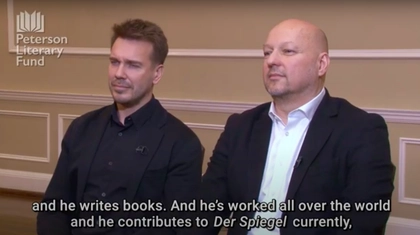Cultivation of cotton in Ukraine is an old tradition, lost during USSR. But now, in the midst of a war, it will be revitalized in Odesa region, thanks to Russia’s full-scale invasion.
On May 14, President Volodymyr Zelensky signed Bill No. 10427-1 into law, a significant move aimed at accelerating the registration of cotton varieties and promoting their cultivation in the Odesa region. This initiative is particularly strategic given that cotton cellulose is a key component in the production of gunpowder and tank shell charges, both of which are currently in short supply worldwide. The global shortage of gunpowder has driven up prices, exacerbated by Russia’s aggressive procurement of cotton cellulose from Asian countries to supply its munitions factories. By cultivating its own cotton, Ukraine can mitigate its ammunition shortage, reducing reliance on foreign sources.
JOIN US ON TELEGRAM
Follow our coverage of the war on the @Kyivpost_official.
The choice of the Odesa region – specifically Bessarabia, close to Romanian border – for cotton cultivation is no coincidence. The area’s soil and climatic conditions are ideal for this crop. Experts at the Institute of Climate-Oriented Agriculture of the National Academy of Agrarian Sciences (NAAS) believe that, unlike cotton cultivation in tropical regions or Central Asian countries, production in southern Ukraine is more environmentally sustainable.
Ukraine’s relationship with cotton dates back to 1827, when the first attempts to cultivate it were made in the Kherson region on a five-hectare plot. By the 1930s, cotton production had expanded significantly, with over 1,500 collective farms growing the crop by 1932. This trend continued after World War II as the Soviet Union faced a severe shortage of raw materials for textiles. Cotton was again sown in the Kherson region, with plants spaced 20 centimeters apart and harvested manually, often with the help of schoolchildren.

Russia Claims Capture of Two More East Ukraine Villages
However, in 1956, the Soviet government abruptly decided to halt cotton cultivation in southern Ukraine, citing the inability to achieve high yields without irrigation. The prevailing agricultural policy at the time enforced a strict specialization of crops across the Soviet republics, with cotton being the domain of Central Asia, leading to a temporary pause in experiments with cotton in the South.
The cultivation of cotton in Ukraine holds not only agricultural but also strategic significance. Pure cotton cellulose is used in the production of gunpowder.
A significant step forward in Ukrainian agriculture was taken by the Stoyanov AA farm in Odesa, which embarked on an experimental project to grow cotton: a unique endeavor for Ukraine. Thanks to the dedication and persistence of the team, they successfully harvested the first cotton bolls, marking an important milestone for the domestic agricultural sector.
“The cotton bolls are maturing and are expected to burst open like sails caught in a light breeze. We eagerly anticipate the unveiling of the snow-white fiber, the culmination of a lengthy process. This moment is a triumph of both nature and human effort. The cotton will become visible, and with it, the pride in what has been achieved”" said Alla Stoyanova from Agrarna Odeshchyna.
The cultivation of cotton in Ukraine holds not only agricultural but also strategic significance. From the fields, raw cotton – a mixture of fibers and impurities – is harvested and then processed to obtain pure cotton cellulose. This cellulose is further processed into nitrocellulose at defense enterprises, which is used in the production of gunpowder.
Expanding cotton cultivation in Ukraine contributes not only to the diversification of the agricultural sector but also to strengthening national security.
While Ukraine is reviving its cotton industry, Russia has significantly ramped up its imports of cotton cellulose since the start of its full-scale invasion. Lacking substantial domestic production, Russia has increased imports from Kazakhstan and Uzbekistan. According to UN Comtrade data, cotton cellulose imports from these two countries rose from $4 million in 2021 to nearly $10 million in 2022, with Uzbekistan alone supplying $9 million worth in the first nine months of 2023.
Private Russian companies often purchase this cellulose under the guise of manufacturing varnishes, only to resell it to state-owned munitions factories. In 2022, Uzbek exporter Raw Materials Cellulose made 14 direct shipments worth nearly $500,000 to the Tambov Gunpowder Plant, a figure that rose to $2.6 million in 2023. Similarly, Kazakhstan’s “Khlopkoprom-Cellulose” has been supplying Russian powder producers since 2022, with contracts extending to 2026.
China, and unexpectedly, even Western countries such as the United States, Germany, Turkey, and Taiwan, have also been sources of nitrocellulose for Russia despite sanctions. The Wall Street Journal reported that Russian importer Analytical Marketing Chemical Group received about $700,000 worth of nitrocellulose from Taiwan over the past two years, much of it destined for the Kazan Gunpowder Plant.
Turkey’s involvement has grown significantly since the start of the invasion. Before the war, it supplied only 1% of Russia’s nitrocellulose, but by mid-2023, Istanbul-based Noy İç Ve Diş Ticaret (Noy) accounted for nearly half of Russia’s imports. Notably, much of this material originated from Western suppliers. For instance, German subsidiaries of International Flavors & Fragrances sold at least 80 tons of nitrocellulose to Noy, which then found its way to Russia.
As defense companies worldwide scramble to secure nitrocellulose amid shortages and high prices, Russia has managed to circumvent sanctions and increase its supply, bolstering its war efforts.
You can also highlight the text and press Ctrl + Enter






